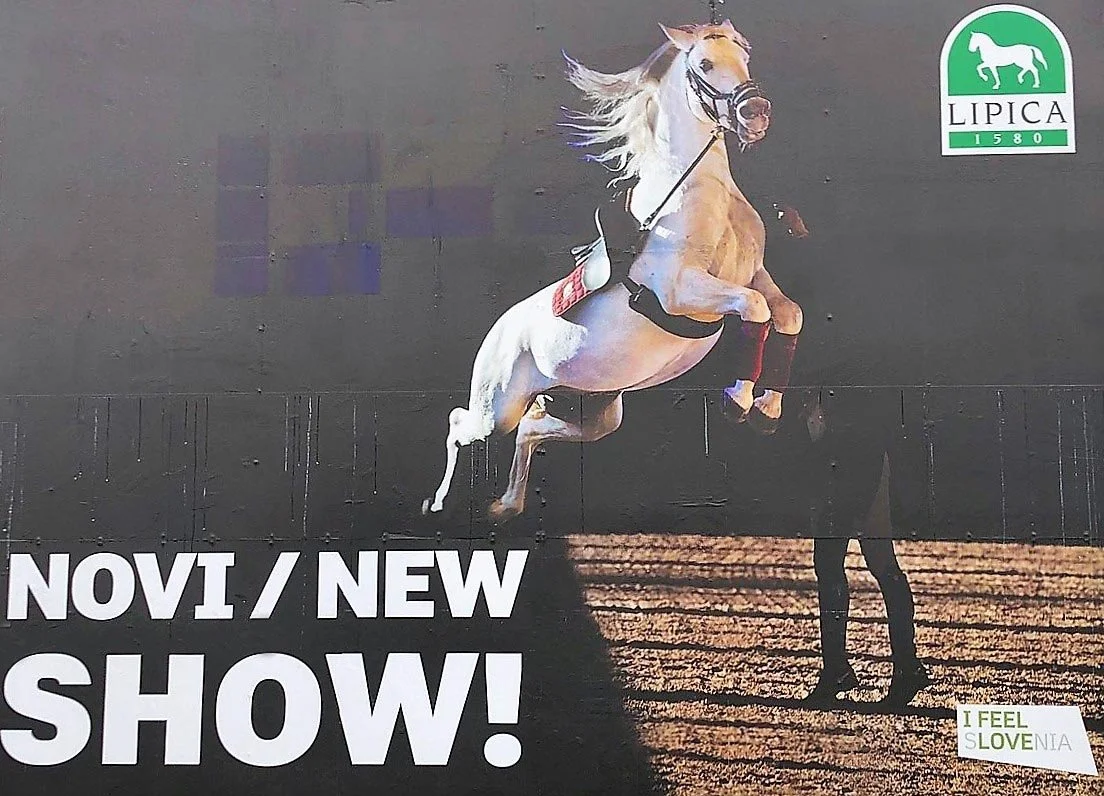Regal Lipizzan Horses on Display in Slovenia – Lipica, Slovenia
What is It - The Lipizzan horse is known for its bright white coloring, regal bearing, powerful build, even temperament and performance in riding competitions. While other nations played a role in the breeding of this horse over the centuries, it is now established that Lipizzans were initially bred and cultivated at the Lipica Stud Farm in Slovenia in the late 16th century. The farm continues to operate today and displays the horses to enthusiastic visitors.
Lipizzan horses were developed by the Hapsburg monarchy. After obtaining some Andalusian horses from Spain, the royal stables in Lipica bred its horses with others from Arab, Berber, and local farms creating the original Lipizzans. Originally conceived as a special horse to be ridden by military units and the nobility, the horses became popular for training and competitive riding all over Europe including at the famous Spanish Riding School in Vienna. Lipizzans were widely admired for their balance and rhythm, high stepping gait and signature flying movement called “airs above the ground.” They remain actively engaged today as show horses and carriage drivers.
Lipizzans have interesting characteristics. First, the horses mature slowly. Born with black or gray coloring, they whiten gradually over a 6-to-10-year period. Second, they endure for years often living into their thirties and completing riding performances for decades. Third, while they are not the largest horses, they are muscular and strong with massive shoulders and chests.
Horse lovers and animal enthusiasts enjoy visiting the Lipica Farm to tour the estate and see the horses in action. Some popular things to do there are the following:
Tour the Lipikum Musuem which displays the long history of the breed and their special recognition as preeminent horses in competitions.
Spend time observing the three hundred beautiful horses around the premises including watching the mares depart to the pastures with their foals in the morning at 9:30, graze in the fields, and return to the stables at 6:30.
Watch a 55-minute performance of the Lipica riding school where the ringmaster will have the horses demonstrate the riding elements that distinguish the Lipizzans and their precision techniques.
View a training session of the Lipica riding school involving horses and their riders
Tour the carriage museum and take a carriage ride through the paths and woodlands of the property
Experience personal contact with a horse or a pony
Ride a Lipizzan horse on the trails and woodlands of the premises
Cost - Activities at the farm vary from tour to tour and experiences such as riding a horse require an additional fee. A basic admission package for visiting the museum, watching the horses in their stables or around the grounds, and seeing a performance costs approximately $30 for adults. Performances and training sessions take place only two or three days each week during the warmer months.
When to Go - The weather in Slovenia is temperate and enjoyable from May to September with little rain but there can be intense heat at times in July and August and tourist sites are often crowded then.
How to Get There - Excursions to the Lupica Farm are provided by cruise ships docked in nearby Koper and offered by tour companies to vacationers looking to explore the countryside of Slovenia after enjoying the picturesque capital of Ljubljana or relaxing at Lake Bled. Lipica is 50 miles from Ljubljana, 20-miles from the Italian city of Trieste, and 100 miles from Venice. Consequently, people traveling on their own often drive to Lipica Farm or take a taxi after flying into Ljubljana on one of the European carriers serving that city.




